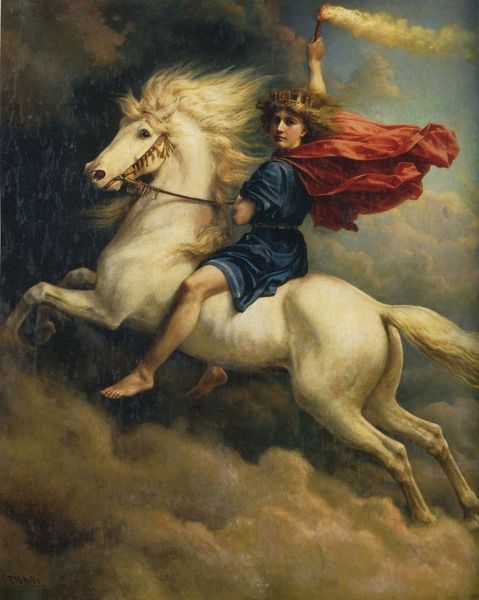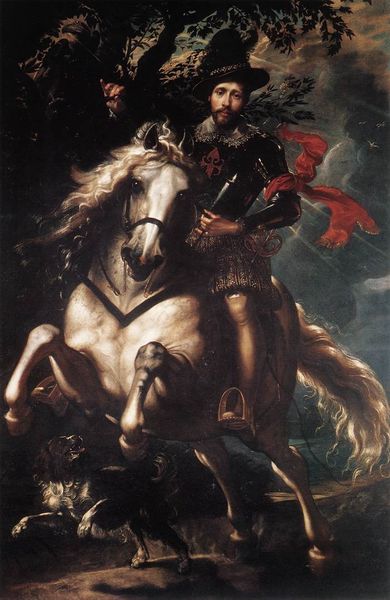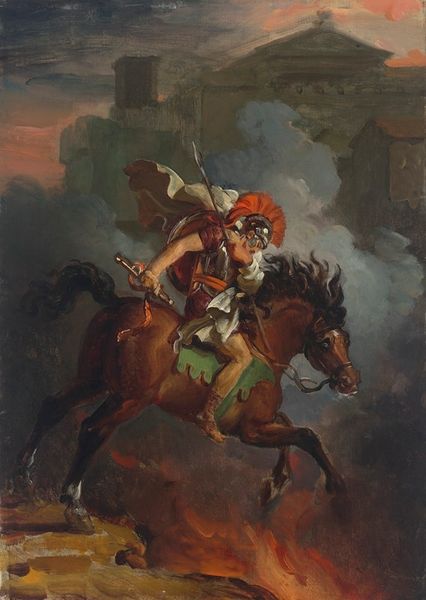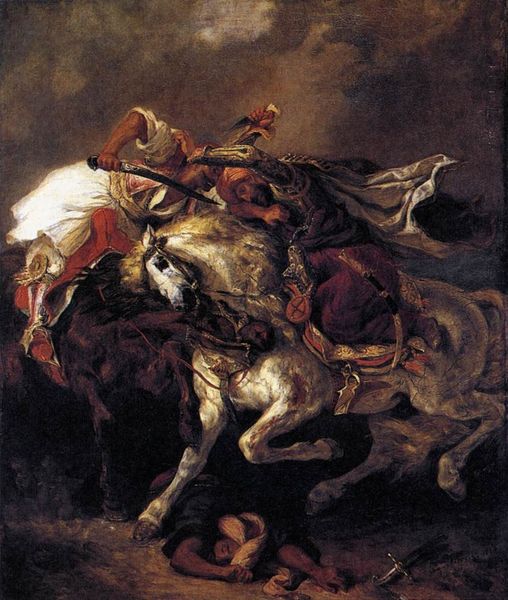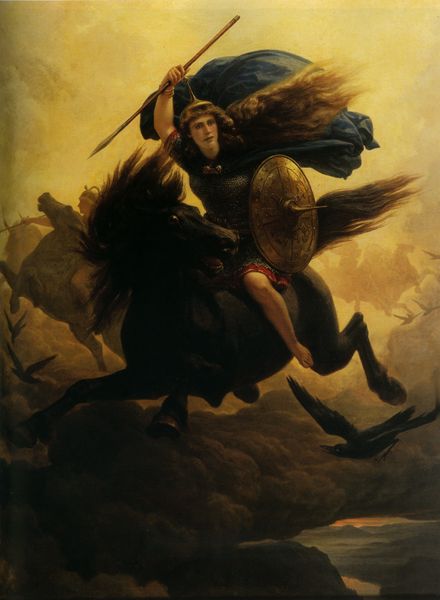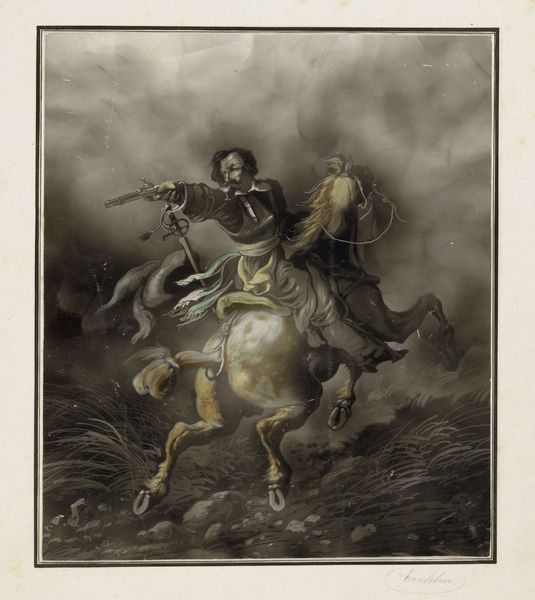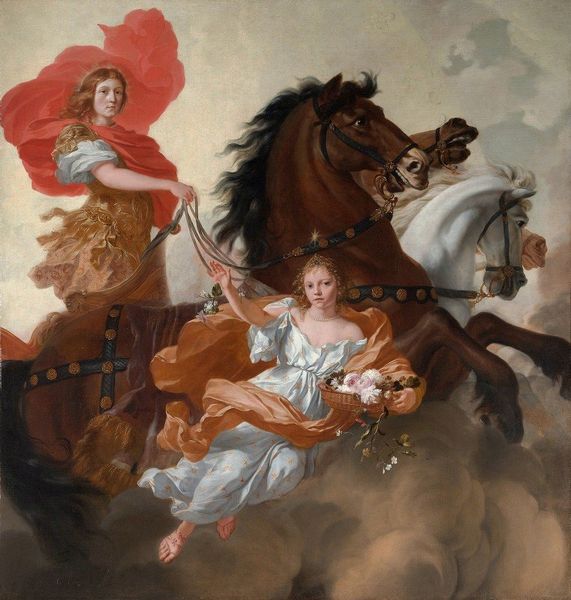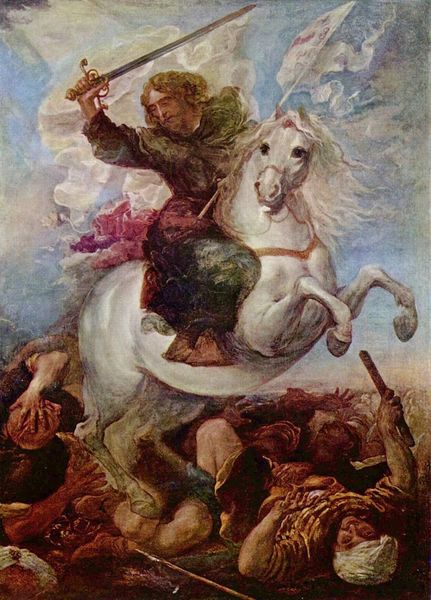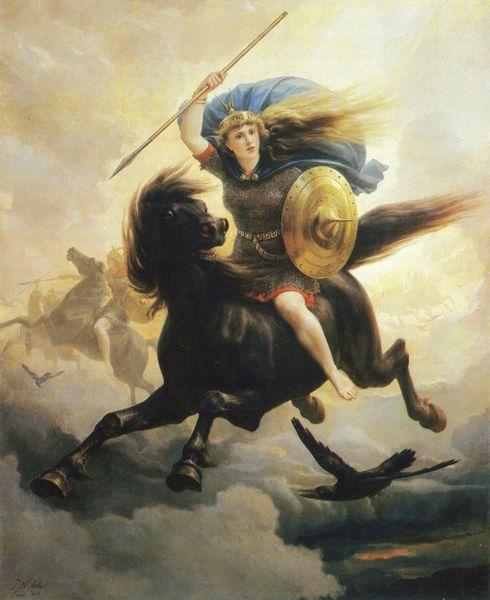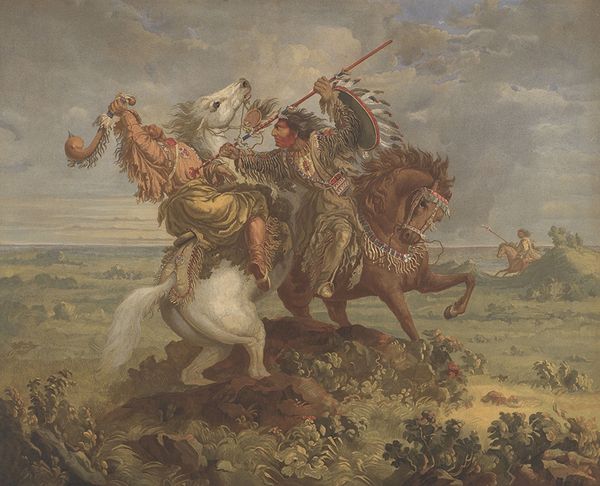
Dimensions: support: 1222 x 991 mm frame: 1512 x 1292 x 142 mm
Copyright: CC-BY-NC-ND 4.0 DEED, Photo: Tate
Editor: This is Philip James De Loutherbourg's "The Vision of the White Horse," currently residing at the Tate. There is an undeniable dramatic tension here; the fiery reds, the figures emerging from the clouds... What strikes you most about the composition? Curator: The dynamism, certainly. Observe how De Loutherbourg employs diagonal lines to convey movement and energy. The positioning of the horses and riders against the swirling clouds creates a sense of urgency, doesn't it? Editor: It does. I also see how the artist used light to draw the eye. Thanks for pointing that out! Curator: Indeed. The strategic use of chiaroscuro enhances the dramatic effect and emphasizes the figures' powerful forms. It's a brilliant study in pictorial structure.
Comments
tate 8 months ago
⋮
http://www.tate.org.uk/art/artworks/de-loutherbourg-the-vision-of-the-white-horse-t01138
Join the conversation
Join millions of artists and users on Artera today and experience the ultimate creative platform.
tate 8 months ago
⋮
In the last decade of the eighteenth century, the French Revolution, the ensuing wars and the approaching millennium sparked a new trend for apocalyptic subjects. Artists explored themes of destruction and divine judgement and the end of mankind.Here Loutherbourg shows the first two of the four horsemen of the Apocalypse: the ‘conquerer’ on a white horse, drawing a bow, and ‘War’ on a red horse, wielding a sword. With ‘Famine’ and ‘Death’, they ride out after the breaking of the first four seals of the Book of Judgement. Loutherbourg made this design for an illustrated Bible. Gallery label, May 2007
